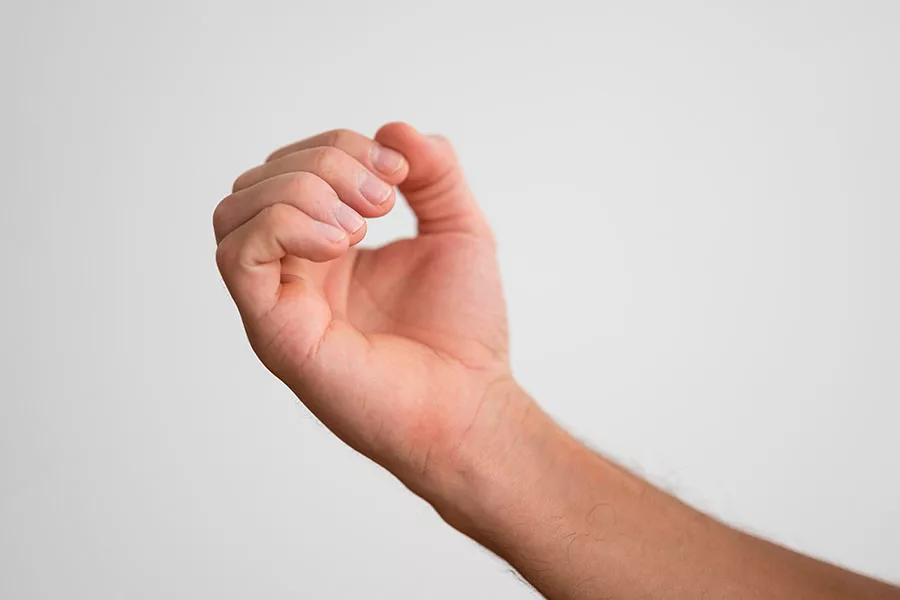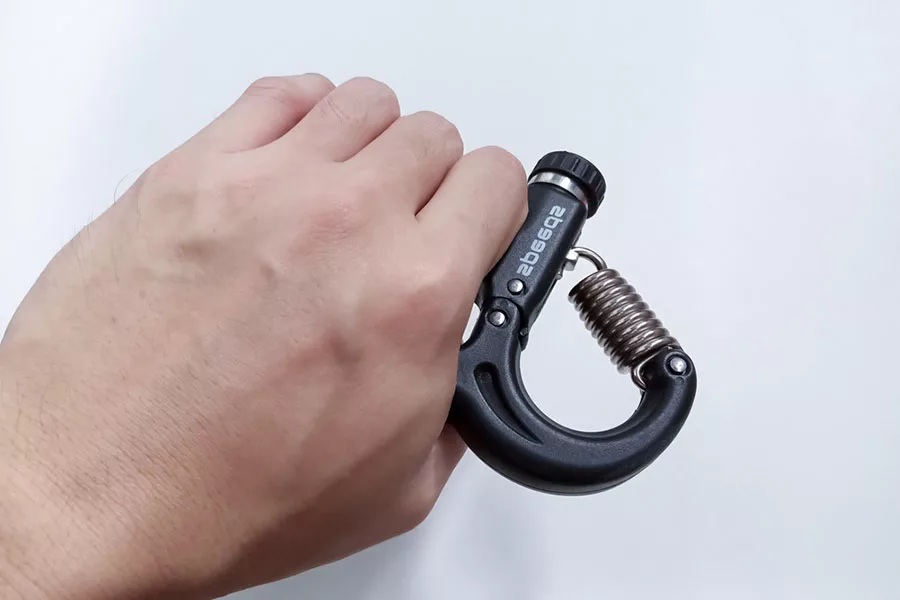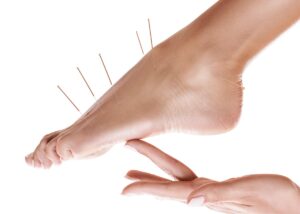10 Powerful Neuropathy Exercises to Reclaim Control of Your Hands
Various treatments are available for neuropathy in hands, including medications, pain relief creams, chiropractic, or even surgery in some cases.
Physical therapy is another option that’s often overlooked. But, incorporating gentle stretches and hand exercises for neuropathy into your daily routine can help improve circulation, reduce muscle tension, and increase flexibility in the hands and arms. And while these exercises may not cure neuropathy, they can offer relief, reduce nerve pain, and improve your overall quality of life.
So, here are 10 exercises for neuropathy in hands that you can easily perform at home. But first, let’s talk about safety!
Related article

10 Best Diabetic Neuropathy Shoes for Women and Men in 2022
Shoes for neuropathy considerably help reduce foot pain and are proven to protect your feet from further complications. How to choose yours?
How to Safely Perform Exercises for Neuropathy in Hands
Hand exercises for neuropathy are generally considered safe. However, we’d like first to bring the following to your attention:
- Before starting an exercise program for neuropathy in hands, consult a doctor or physical therapist to ensure specific exercises are safe for you.
- Start each exercise slowly and gradually increase the intensity and duration as your comfort level and strength improve.
- Remember to listen to your body. If you experience any abnormal pain or discomfort, stop the exercise.
- Peripheral neuropathy is a serious condition that can cause severe health complications. Work with a healthcare provider to address the underlying causes.
10 Neuropathy Exercises for Hands, Fingers, and Arms
Here are 10 hand, finger, and arm exercises that can help reduce nerve pain and neuropathy symptoms in your hands:
Exercise 1: Hand stretches for peripheral neuropathy
Hand stretches are great for neuropathy, as it is a gentle way to exercise your hands and fingers simultaneously. Most people find that practicing hand stretches several times a day helps relieve nerve pain. But remember to be gentle with your stretches to avoid causing further pain. Here’s how to stretch your hands and fingers if you have neuropathy:
- Start by sitting comfortably with your back straight and your feet flat on the floor.
- Hold one hand out in front of you with your palm facing down.
- Use your other hand to gently lift each finger up, one at a time, and then release it back down.
- Repeat this process with each finger, moving slowly and gently to avoid discomfort.
- Once you’ve lifted and released each finger individually, try lifting all your fingers at once and holding them in a stretched position for a few seconds before releasing.
- Repeat the exercise with your other hand.
Exercise 2: Wrist rotations to increase range of motion
Wrist rotation exercises can benefit people with neuropathy in the hands and arms. They help boost circulation, increase the range of motion, and reduce stiffness and pain in the wrists.
- Sit or stand with your arms at your sides and your elbows bent to a 90-degree angle.
- Slowly rotate your wrists in a circular motion, clockwise and counterclockwise.
- Do 10 to 15 repetitions in each direction.
- Gradually increase the size of the circles you make with your wrists as you get more comfortable with the exercise.
- If you feel any pain or discomfort during the exercise, stop and rest your wrists before continuing.

Related article

The 10 Best CBD Creams for Neuropathy Pain
CBD cream is one of the newest alternative to relieve neuropathy pain and symptoms. 10 great CBD creams for neuropathy reviewed here!
Exercise 3: Finger taps to improve circulation
Finger tapping is a simple and effective neuropathy exercise that can help reduce nerve pain in the hands and fingers while improving blood circulation.
- Sit in a comfortable position with your hands resting on a flat surface.
- Lift one finger at a time, starting with your thumb and working your way to your pinky. Then, tap each finger individually on the surface as quickly as possible for 10 to 30 seconds.
- Repeat this process with each finger on one hand.
- Repeat with your other hand.

Exercise 4: Ball squeeze for hand strength and dexterity
Ball squeeze exercises are great for neuropathy in the hands. They can help improve hand strength, dexterity, and circulation, ultimately relieving nerve pain and preventing further symptoms.
- Get a soft ball or stress ball that is comfortable to squeeze.
- Sit or stand with your arms at your sides and your elbows bent to a 90-degree angle.
- Hold the ball in one hand and squeeze it as hard as you can without causing pain or discomfort.
- Hold the squeeze for 5 seconds, then release.
- Repeat the exercise 10 to 15 times with each hand.
- Gradually increase the time you hold the squeeze as your strength improves.
You can try different variations of this hand exercise, such as squeezing the ball with your fingers only or with your palm and fingers together.

Exercise 5: Finger bends for neuropathy in hands
Finger bend exercises help improve hand mobility and agility, which can be beneficial for people with neuropathy in their hands.
- Sit or stand comfortably and hold your hand in front of you, with your palm facing down.
- Slowly bend your fingers towards your palm, curling them into a fist. Use the other hand to help bend your fingers if needed.
- Hold the position for 5 seconds, slowly release your fingers back to the starting position and straighten them out.
- Repeat the exercise 10 to 15 times with each hand.
- Gradually increase the time you hold the position and the number of repetitions as your mobility and comfort levels improve.

Exercise 6: Using a handgrip strengthener for neuropathy
Using a handgrip strengthener can be a helpful way to exercise and strengthen the muscles in your hands, which can help with neuropathy. However, you should be careful not to overdo it.
Here’s how to use a handgrip strengthener safely:
- Choose a handgrip strengthener that is appropriate for your level of strength and abilities. Many different types and resistance levels are available, so start with a lower resistance and work your way up as your grip strength improves.
- Hold the handgrip strengthener in one hand with your fingers wrapped around the grip and your thumb on the other side.
- Squeeze the grip as tightly as you can without causing any pain or discomfort. Hold the squeeze for a few seconds before releasing the grip slowly.
- Repeat this hand exercise several times, and switch to your other hand.

Related article

Can Acupuncture Help Peripheral Neuropathy?
What are the benefits of acupuncture for neuropathy? Does it really relieve nerve pain? Are there any risks?
Exercise 7: Thumb extensions to improve hand mobility
Thumb extensions are another helpful exercise for people with peripheral neuropathy in the hands and fingers. When done correctly, it helps improve strength and mobility in the thumb while reducing the pain caused by damaged nerves.
- Begin by sitting or standing in a comfortable position with your arm extended in front of you and your palms facing downward.
- Place a rubber or resistance band around your fingers and thumb above the knuckles.
- Keep your fingers and wrist straight, and slowly open your hand by spreading your fingers apart.
- Hold this position for a few seconds, then release and return to the starting position.
- Repeat this thumb exercise several times, gradually increasing the resistance of the rubber band as your hand becomes stronger.
Exercise 8: Thumb touches for better movement & coordination
The thumb touches exercise for neuropathy helps improve finger movement and coordination. It’s a very simple exercise that requires no material and can easily be adapted to your own level and strength.
- Begin by sitting or standing comfortably with your arms at your sides.
- Slowly raise one hand in front of you, with your palm facing up.
- Keeping your fingers straight, touch the tip of your thumb to the tip of your index finger, then release.
- Repeat this movement, touching your thumb to your middle finger, ring finger, and little finger.
- After completing one set with one hand, switch to the other hand and repeat.
You can perform several sets of this hand exercise for neuropathy throughout the day, gradually increasing the speed and accuracy of your movements.

Exercise 9: Wrist flexions and extensions
Another excellent exercise for neuropathy in the hands is to alternate wrist flexions and extensions.
- Wrist flexion: Hold your hand in front of you with your palm facing up. Slowly bend your wrist down towards the floor, keeping your fingers and thumb straight. Hold this stretch for a few seconds, and then release.
- Wrist extension: Hold the same hand before you but with your palm facing down this time. Slowly extend your wrist up towards the ceiling, keeping your fingers and thumb straight. Hold this stretch for a few seconds, and then release.
Repeat this exercise several times with both hands.

Exercise 10: Arm stretches for neuropathy in hands
While peripheral neuropathy primarily affects the nerves of the body’s extremities (hands and feet), stretching your entire arms can help relax your muscles and reduce the symptoms in the hands. Here’s a simple arm stretch exercise that can help with neuropathy:
- Start by sitting or standing up straight with your feet shoulder-width apart and your arms at your sides.
- Raise your right arm straight up overhead, reaching as high as possible. Keep your left arm at your side.
- Slowly bend your right arm at the elbow, bringing your right hand behind your head. Then, use your left hand to gently push your right elbow back and down, stretching the muscles in your right arm.
- Hold the stretch for 10-20 seconds, then release.
- Repeat the stretch on the other side, raising your left arm up and bending it at the elbow with your left hand behind your head.
- Repeat the stretch on each arm several times, gradually increasing the stretch duration as you feel more comfortable.

It’s important to breathe deeply and relax your muscles while stretching.
We hope these exercises will help you manage the way peripheral neuropathy may affect your hands.

About the author: Laura Pandolfi
I’m Laura. Type 1 diabetic. Mother. Traveler. Writer. Researcher. I started this blog five years ago to investigate diabetes-related topics and share different views. You can read my partner diabetes organizations around the World here.
Sources
1 Poulsen E, Hartvigsen J, Christensen HW, Roos EM, Vach W, Overgaard S. Patient education with or without manual therapy compared to a control group in patients with osteoarthritis of the hip. A proof-of-principle three-arm parallel group randomized clinical trial. Osteoarthritis Cartilage. 2013 Oct;21(10):1494-503. doi: 10.1016/j.joca.2013.06.009. Epub 2013 Jun 21. PMID: 23792189. https://pubmed.ncbi.nlm.nih.gov/23792189/
2 Chung CL, Mior SA. Use of spinal manipulation in a rheumatoid patient presenting with acute thoracic pain: a case report. J Can Chiropr Assoc. 2015 Jun;59(2):143-9. PMID: 26136606; PMCID: PMC4486984. https://www.ncbi.nlm.nih.gov/pmc/articles/PMC4486984/
3 Onifer SM, Sozio RS, DiCarlo DM, Li Q, Donahue RR, Taylor BK, Long CR. Spinal manipulative therapy reduces peripheral neuropathic pain in the rat. Neuroreport. 2018 Feb 7;29(3):191-196. doi: 10.1097/WNR.0000000000000949. PMID: 29381653; PMCID: PMC6363337. https://www.ncbi.nlm.nih.gov/pmc/articles/PMC6363337/
4 Ernst E. Adverse effects of spinal manipulation: a systematic review. J R Soc Med. 2007 Jul;100(7):330-8.
doi: 10.1177/014107680710000716. PMID: 17606755; PMCID: PMC1905885.
https://www.ncbi.nlm.nih.gov/pmc/articles/PMC1905885/